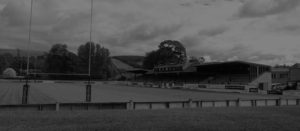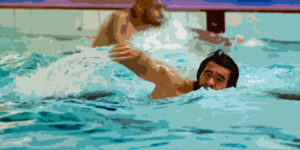Squat variations to guard against injury
- Training Team
- Strength
A training session without squats is not a training session – or so my old rugby strength and conditioning coach used to say. Squats should be the cornerstone of your rugby workouts. It’s one of the most beneficial exercises you can do, and not squatting hard, heavy, and often could undermine your rugby performance.
Squats are arguably the best way to build size, strength, and leg power. They work your lower body as it functions in nature – with your feet planted firmly on the floor, driving your body upward against gravity.
Squats also teach you to transfer force from your feet to whatever load you are lifting. That means they don’t just work your legs, they work everything from the tips of your toes to the barbell on your shoulders. Want a strong core? Do squats! Want a stronger lower back? Do squats! Want a strong upper back? Do squats?
You get the idea.
Squats allow you to move significant amounts of weight. Most ruggers should strive toward reaching a double bodyweight back squat. You might never reach this exact target, but that’s what you should gear your training towards.
However, squatting hard and heavy is not without risks, especially if you only do back squats. Back squats are the most commonly performed type of squat and that’s where the problems start.
Back squats can be hard on your knees, lumbar spine, thoracic spine, and even your shoulders. You also need a good level of flexibility to squat safely and effectively.
When some S & C coaches talk about squats, they are referring to the exercise – namely back squats. The reality is that squats are also a movement pattern. When more enlightened coaches say things like you MUST squat, what they really mean is you must include the squat movement pattern in your workouts.
Overuse of back squats can soon lead to stagnation, boredom, and injury. Your body is happier when it’s exposed to a variety of stressors. Do the same thing over and over again and your body and nervous system will revolt.
Feeling banged up from heavy back squats? Bored at the very idea of yet another back squat workout? Break out of your current training rut by including these squatting variations in your training. They are just as beneficial but are different enough to provide you with the variety you need to avoid injury.
1. Safety bar squats
One of the problems with barbell back squats is that proper bar placement is largely dependent on upper body flexibility. That’s why you’ll see a lot of ruggers squatting with very wide hands; they simply can’t bring their hands in any closer. That’s a workable compromise but also reduces upper body stability. Ideally, you want your hands as close together as possible to maximize upper body tension.
Safety bars are cambered and have a built-in yoke which means you don’t need to hold on to keep them secure on your upper back. The load is also slightly forward of your center of gravity, so you’ll have to use your back muscles more than usual to stay upright. Most people find that using a safety bar for squats means that they get a better workout from less weight, and that’s good news for your knees too.
2. Box squats
A lot of squat injuries are caused by divebombing – lowering too fast and then bouncing out the hole. Squatting to a box means you’ll have to descend with much more control and to a fixed height. No more cutting squat depth as you get more tired.
Box squats also break up the eccentric/concentric lifting phases. This means that your ascent starts from a dead-stop. This will a) reduce the amount of weight you can use, b) develop explosive power, c) teach you to maintain total body tension in the hole. These factors all combine to make box squats a very valuable training tool.
3. Squat with chains or bands
Squats are at their most dangerous when you are deep in the hole. That’s when your joints are in their most mechanically disadvantageous position, and your lower back is more likely to round.
You should squat as deeply as your flexibility and mechanics allow, but what if there was a way to reduce the load when you are most at risk, and increase it when you are in a position of strength?
Using chains or bands allow you to reduce the load at the bottom of the squat and increase it as you ascend. This is called accommodating resistance and is a great way to avoid overloading your joints when they are most at risk. Use 30-50% less weight on the bar than usual and add bars or bands to increase the load as you approach lockout.
4. Goblet squats
Goblet squats are a variation of front squats. They are a self-limiting exercise in that when you form starts to break down, it’s all but impossible to keep on grinding out the reps. With goblet squats, the load is held directly in front of your center of gravity which means you’ll have to work hard to maintain proper back position. You’ll also have to brace hard and use your upper body to support the load. Use a kettlebell or a vertically positioned dumbbell for this great exercise.
5. Front squats
Front squats are invariably harder than back squats. They require and develop good upper body flexibility and the position of the load means that you won’t be able to squat as heavy as usual. Like goblet squats, front squats are a self-limiting exercise and if your form deteriorates, you’ll find it all but impossible to grind out the extra reps that take you into the danger zone.
Front squats force you to maintain a much more upright torso than back squats which means they are harder on your quads but easier on your lumbar spine.
6. Overhead squats
If you really need to de-load your squats, this is the exercise for you. Unless you are a proficient Olympic lifter, chances are you’ll only be able to use a fraction of your normal squatting weight with this exercise.
Overhead squats are a kill-or-cure for poor flexibility, so don’t be surprised if you are unable to do even a single rep with an empty barbell. However, if you persevere your flexibility will improve very rapidly, and that will transfer to better performance in the back squat.
7. Bulgarian split squats
Also known as rear leg elevated split squats, this exercise is a great squat variation for identifying and fixing left-to-right leg strength imbalances. It’s also a good way to develop balance and hip mobility.
Because you’ll be working one leg more than the other, you won’t need a lot of weight to really hammer your quads, glutes, and hamstrings. Bulgarian split squats also feature a very upright torso so there is next to no stress on your lower back, especially if you use dumbbells instead of a barbell.
All ruggers need to include single limb exercises in their training, and this exercise is one of the best for your lower body.
8. Trap bar squat lifts
The trap bar squat lift feels like a squat but looks like a deadlift – hence its admittedly awkward name. The weight is below your center of gravity, and directly over your base of support which means there is very little stress on your lower back. The main disadvantage of this exercise is that you are limited by your grip strength and endurance. However, if you want to hammer your legs and not your lower back, this is a very good option.
9. Hip belt squats
Hip belt squats allow you to squat heavy without using your arms, lower back, or upper body. This makes them ideal for the beat-up rugger who’ve had enough of supporting heavy loads on his or her shoulders.
The main disadvantage of this exercise is that it will require some experimentation to find the best set up for you. A pull-up/dip belt can work, but you may find that you need to wrap the chain in towels to avoid painful chaffing. A single central loading pin can make things much easier.
So, there are nine different squat variations to try, some of which can be combined, e.g. front box squats, safety bar squats with bands or chains etc. Use these variations to maintain or improve back squat performance, or even replace back squats entirely. Ruggers need to squat hard, heavy, and often, but that doesn’t mean that you are limited to back squats. Use the squat variation that delivers the best results with the least risk of injury.


